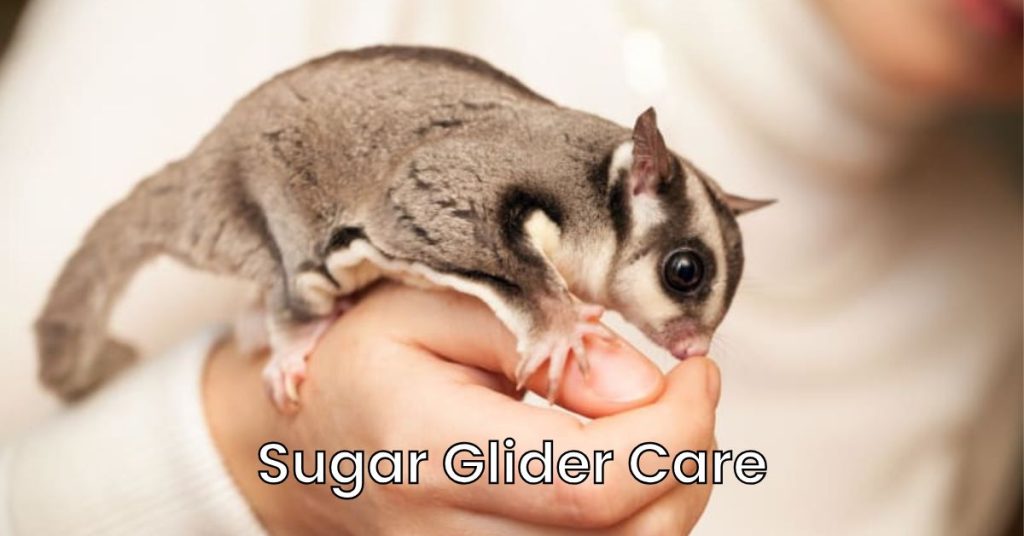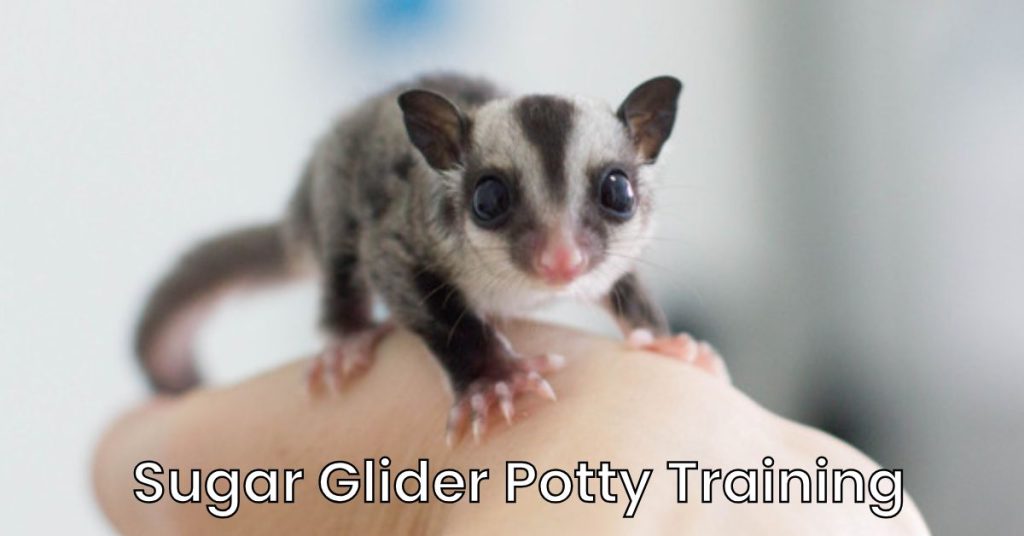Sugar gliders are small, lively pets. They sometimes make barking sounds.
Why do they bark? Understanding your sugar glider’s behavior is important. Barking can mean different things. It might be a sign of excitement, fear, or a way to communicate. This behavior is normal for sugar gliders, but it can be confusing for new owners.
Knowing why your pet barks helps you care for it better. Let’s explore the reasons behind this curious sound. Your sugar glider might just be trying to tell you something important.

Introduction To Sugar Glider Sounds
Understanding the sounds your sugar glider makes can help you care for them better. These small marsupials use various vocalizations to communicate their needs and emotions.
Common Vocalizations
Sugar gliders use different sounds to express themselves. Here are some common ones:
- Barking: This sounds like a small dog bark.
- Crabbing: A loud, harsh noise to express fear or annoyance.
- Purring: A soft, contented sound often heard during bonding time.
- Chattering: Quick, repetitive clicks showing excitement or curiosity.
Each sound has a unique meaning. Learning these helps you understand your pet’s needs.
Purpose Of Barking
Barking is one of the most common sounds sugar gliders make. It can mean different things:
- Attention: They may bark to get your attention, especially if they feel neglected.
- Alerting: Barking can be a warning of potential danger.
- Loneliness: Sugar gliders are social animals. They might bark when they feel lonely.
- Exploration: Sometimes, they bark simply to explore their environment.
Understanding the context of their barking helps address their needs more effectively.
Communication With Other Gliders
Sugar gliders are social animals. They use sounds to communicate with each other. One of these sounds is barking. When your sugar glider barks, it is often trying to talk to other gliders nearby. Understanding their communication helps in providing better care.
Social Interaction
Sugar gliders live in groups in the wild. They form strong bonds with each other. Barking is a way to maintain these bonds. If you have more than one glider, barking could mean they are talking to each other.
A sugar glider might bark to call for its friends. It is a way to check if they are close. Barking can also be a sign of play. They might bark to invite another glider to join in.
Establishing Territory
Sugar gliders are territorial animals. They mark their space in the wild. Barking can be a way to show their territory. It tells other gliders, “This is my area.”
Your pet might bark if it feels its space is being invaded. This is more common if you have new pets or visitors. It is a natural way to protect their home.
| Reason | Description |
|---|---|
| Social Interaction | Communicating with other gliders, checking if friends are close, inviting play. |
| Establishing Territory | Marking their space, protecting their home from new pets or visitors. |
Attention Seeking Behavior
Sugar gliders are social creatures. They often bark to get their owner’s attention. This behavior is common and can be managed. Understanding why they do this is the first step.
Getting Owner’s Attention
Sugar gliders may bark when they want your attention. They crave interaction and can become vocal if ignored. This is their way of saying, “Hey, look at me!”
They might also bark if they are hungry or thirsty. Ensure their food and water supply is always full. Check if they have everything they need in their cage.
Loneliness And Boredom
Loneliness can cause a sugar glider to bark. If they do not have a companion, they can feel isolated. Consider getting another sugar glider to keep them company.
Boredom is another reason for their barking. They need mental and physical stimulation. Provide toys and activities to keep them engaged.
Below is a table that lists signs of loneliness and boredom in sugar gliders:
| Signs of Loneliness | Signs of Boredom |
|---|---|
| Excessive barking | Chewing on cage bars |
| Loss of appetite | Restlessness |
| Depression | Destructive behavior |
Addressing these issues can reduce their barking. Spend more time with your pet. This will improve their mood and reduce their need to bark for attention.
Environmental Factors
Environmental factors play a significant role in your sugar glider’s behavior. Understanding these factors can help you create a better environment for your pet. Let’s explore some common environmental reasons behind your sugar glider’s barking.
Response To New Surroundings
Your sugar glider might bark when it is in a new environment. This behavior is a reaction to the unfamiliar setting. New surroundings can cause stress and anxiety. Your sugar glider uses barking to express its discomfort. It is essential to give your pet time to adjust. Make the new space as comfortable as possible. Provide familiar items like toys and bedding.
Reaction To Noise And Light
Noise and light can also trigger barking in sugar gliders. Loud sounds may startle your pet. Sudden noises can cause fear and anxiety. Try to keep the environment calm and quiet. Excessive light can disturb your sugar glider’s natural rhythm. These creatures are nocturnal and prefer dim lighting. Ensure their habitat is free from bright lights during their active hours.
Health Concerns
When your sugar glider barks, it might be more than just trying to get attention. Sometimes, this behavior can signal health concerns. It is important to pay close attention to their actions and sounds. Here, we will discuss signs of discomfort and indicators of illness.
Signs Of Discomfort
Sugar gliders might bark if they feel uncomfortable. Look for these signs:
- Restlessness
- Frequent scratching
- Unusual posture
Restlessness can mean they are in pain. Scratching could point to skin issues. Unusual posture might indicate an injury.
Indicators Of Illness
Barking can also be a sign of illness. Here are some indicators:
- Loss of appetite
- Weight loss
- Unkempt fur
- Diarrhea
If your sugar glider refuses food, it might be sick. Weight loss is another key sign. Unkempt fur can indicate poor health. Diarrhea is also a red flag.
Consult a vet if you notice any of these signs. Quick action can ensure your sugar glider stays healthy.
Safety And Security
Sugar gliders bark for various reasons. One of the key reasons relates to their sense of safety and security. Understanding this aspect can help you better care for your sugar glider. It can also build a stronger bond between you and your pet.
Perceived Threats
Sugar gliders may bark if they sense a threat. This could be a loud noise, a new pet, or even a stranger. They use barking to alert their colony of potential danger. It’s their way of saying, “Stay alert!” They rely on their keen senses to detect changes in their environment.
Your sugar glider might also bark at night. In the wild, they are active during these hours. Darkness can make them feel more vulnerable. Any unusual sounds or sights might trigger their barking.
Protective Instincts
Sugar gliders are known for their protective nature. They will bark to guard their territory. This includes their cage, toys, and you, their owner. They see you as part of their colony. When they perceive a threat, they want to protect you.
Their protective instincts are strong. Even small changes can make them feel uneasy. Moving their cage or introducing new items can trigger barking. Being aware of this can help you create a safer environment for your pet.
Training And Behavior Management
Training and managing your sugar glider’s behavior can help reduce their barking. Proper training ensures a happy and healthy pet. Let’s explore some effective methods to manage their behavior.
Positive Reinforcement
Positive reinforcement can encourage good behavior in sugar gliders. Offer treats when your pet behaves well. This creates a strong bond between you and your pet. Reward them for being quiet and calm. It reinforces the behavior you want to see more often.
Use gentle words and soft tones. Sugar gliders respond well to a calm environment. Avoid shouting or aggressive actions. They can stress your pet and lead to more barking.
Creating A Routine
A consistent routine helps sugar gliders feel secure. Establish regular feeding times. Schedule play sessions at the same time each day. Predictability can reduce anxiety and barking.
Ensure your sugar glider has a safe and comfortable space. A well-structured environment can keep them calm. Reduce loud noises and sudden changes in their surroundings.
When To Consult A Veterinarian
Your sugar glider’s barking could be a sign of various issues. While some are harmless, others require professional attention. Understanding when to seek a veterinarian’s help is crucial.
Persistent Barking
If your sugar glider’s barking continues for days, it could be a sign of distress. Persistent barking often indicates discomfort or pain. Observe other signs like changes in eating habits and activity levels.
| Signs | Possible Issues |
|---|---|
| Loss of Appetite | Health Problems |
| Decreased Activity | Injury or Illness |
| Excessive Scratching | Parasites |
Professional Advice
A veterinarian can provide a thorough check-up. They will identify any underlying health issues. Early diagnosis can prevent complications and improve your pet’s quality of life.
- Examine physical health
- Check for parasites
- Evaluate diet and nutrition
Do not wait too long to consult a vet. Your sugar glider’s well-being depends on timely intervention.
Frequently Asked Questions
Why Is My Sugar Glider Barking At Night?
Sugar gliders bark at night to communicate or express distress. It can also signal hunger or loneliness. Observing their behavior can help identify the exact cause.
Is Barking Normal For Sugar Gliders?
Yes, barking is a normal behavior for sugar gliders. It’s a form of communication. They may bark to alert their owner or interact with other gliders.
How Do I Stop My Sugar Glider From Barking?
To reduce barking, ensure your sugar glider’s needs are met. Provide proper diet, social interaction, and stimulating environment. Consistent routines can also help.
What Does Sugar Glider Barking Mean?
Sugar glider barking can indicate various things. They might be hungry, lonely, or stressed. Sometimes, they simply want attention or are communicating with other gliders.
Conclusion
Understanding why your sugar glider barks is important. It helps you address its needs. Barks can signal excitement, fear, or attention-seeking. Pay attention to the context. Observe their environment closely. Ensure they feel safe and secure. Provide companionship and stimulation.
Meeting their needs reduces stress. A happy sugar glider is a quiet one. Be patient and understanding. Your bond will strengthen. Enjoy your time with your sugar glider.


